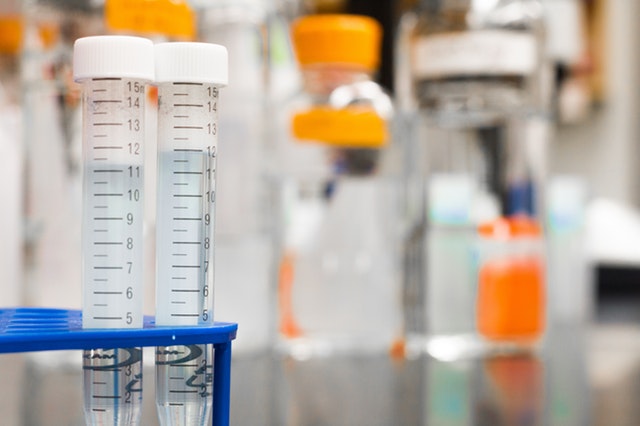
Image Source: Pexels
It’s no surprise to most people – drug abuse is at an all-time high in the United States. Drugs are easier than ever to get access to, cheaply made and therefore more affordable, and depression is at a high also, causing more people to turn to drugs as an escape.
Because of the concern of illicit drug use by so many people, many employers are turning to drug testing to screen potential candidates and current employees. Other common uses for drug testing include court-mandated tests to determine stability, post-accident testing to check for under the influence driving, and college and athletic drug testing.
But what exactly does it mean when someone tells you that you must undergo a drug test?
What is the Purpose of Drug Testing?
Drug testing is when you provide a biological sample, such as blood or urine, and that sample is analyzed to determine the presence of specific drugs. It is extremely common in positions in which public safety or the safety of others may be in jeopardy if the person doing the job is under the influence of drugs, such as federal transportation, hospitals, and airways.
The reason for your drug test will determine exactly what the test screens for. For example, a pre-employment drug test will often consist of a urine test that is analyzed for the presence of illicit drugs, certain prescription drugs, and alcohol. But sports drug testing may be more specific, checking for the presence of illegal drugs and specific performance-enhancing drugs.
Since drug abuse, including prescription drug abuse, is such a significant problem, it impacts the economy in the level of billions of dollars through crime, medical care, and other costs. Many employers don’t want the headache of dealing with the low productivity, ineffectiveness, and instability of someone with a serious drug problem, so they try to avoid the hassle by requiring regular drug tests.
What are the Most Common Methods of Drug Testing?
Drug testing, to be fully credible, must be done at a certified laboratory. These drug screening programs will have two steps to them: initial and confirmatory. Using both of these steps ensures that the odds of a false reading are extremely low.
The first step, the immunoassay, is usually used to screen users first. If it is negative, no further action is necessary. However, if it is positive, there is a second analysis, the gas chromatography-mass spectrometry, or GC-MS test.
The GC-MS analysis takes a separate section of the biological specimen and tests it to confirm the presence of drugs, how much is in there, and what it specifically is.
Urine drug testings are the most commonly used samples. A urinalysis can find drugs in your system even after the drug’s effects are gone. Employers often use a urinalysis for the screening of major drugs such as alcohol, cocaine, marijuana, and opiates. You can read more now about this type of drug testing here.
Another common drug test is the mouth swab test, in which saliva is collected. This type of screening only detects drug use up to three days, so it is not good if you are looking for long-term use.
Blood testing for drug use is used when you need to know exactly how much of a substance is in a person’s body at that time. It can be used to test for multiple drugs and is often used in emergency rooms for toxicology or after an accident that was suspected to be caused by someone under the influence of drugs.
The last common type of biological samples used for drug testing is hair. Hair testing is a common way to check for long-term use of drugs within the last 90 days. When a person uses cocaine, methamphetamine, alcohol, opiates, marijuana, and phencyclidine, the proof of that use stays in your hair follicles for up to 90 days and tells on that person in a drug test.
Why is Drug Testing Important?
To use a drug or not is a personal choice, but when that choice impacts others, it becomes important to limit the potential for damages. Many studies have shown that a person’s entire behavior, their overall performance, and their general attitude are all greatly affected by substance abuse.
Drug use in the workplace, on sports teams, in school, or in any other area in which one person’s choices can impact another person’s life must be monitored. When drugs are allowed to run unchecked, many problems can occur.
In fact, workplaces that do not require drug screenings often fall victim to things like on-the-job injuries or fatalities and lawsuits when the user makes a poor decision that impacts another person’s safety.
The user themselves tends to have low morale, reducing their job performance and costing the business money. They are usually tardy or absent regularly, make poor decisions on the job, and have mental health problems. These aspects of a drug user can cost the employer thousands of dollars or more annually.
Even though the results of employing someone with a drug habit can be devastating, the reality is that most of these illegal or illicit drug users are employed at least part-time.
The same consequences apply to sports teams when a player is on drugs. The poor decision-making qualities, tardiness, and potential for injury that occurs when a person is using drugs can affect the entire team and cause serious problems.
Since the effects of drug abuse are not solely relegated to the user, drug use becomes a problem that must be regulated, and the field of drug testing has grown immensely over the last few decades.
Drug Testing is Important for Everyone’s Health
The cost of illicit drug use does not stop with the user. Federally, billions of dollars are lost to this crime as users seek medical treatment, cause accidents, and create ripple effects due to their actions while under the influence of drugs.
As technology continues to improve, so will the methods of drug testing, but the importance of this type of test is made abundantly clear with every life altered or lost due to someone’s poor choice while they are using an illicit drug.
About The Author:
Stacey Smith is a freelance health writer. She is passionate to write about women’s health, dental health, diabetes, endocrinology and nutrition and provide in-depth features on the latest in health news for medical clinics and health magazines.




